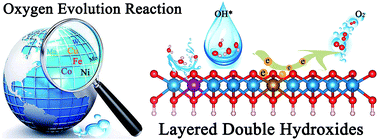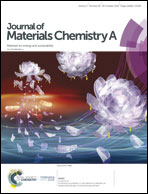Revealing Ni-based layered double hydroxides as high-efficiency electrocatalysts for the oxygen evolution reaction: a DFT study†
Abstract
The development of high-activity and earth-abundant non-noble metal electrocatalysts for the oxygen evolution reaction (OER) is highly desirable but is an ongoing challenge facing us now. In this work, a series of Ni-based layered double hydroxide (LDH) electrocatalyst models are constructed, and their OER performance is systematically screened via density functional theory (DFT) calculations. We discover that the exposed O sites on the pristine NiOOH substrate are more catalytically active than the Ni sites and play a vital role in the OER process. Moreover, introducing a second transition-metal heteroatom dopant is an effective strategy to boost the OER catalytic activity of the NiOOH matrix. Specifically, Ni@NiFe-2 exhibits an extraordinary OER performance with an overpotential of 0.21 V and can compete with or even outperform the current best catalysts such as RuO2 and IrO2. Our theoretical findings pave a new way for exploring high-efficiency OER catalysts and also shed light on NiFe-based LDHs as advanced candidates.



 Please wait while we load your content...
Please wait while we load your content...